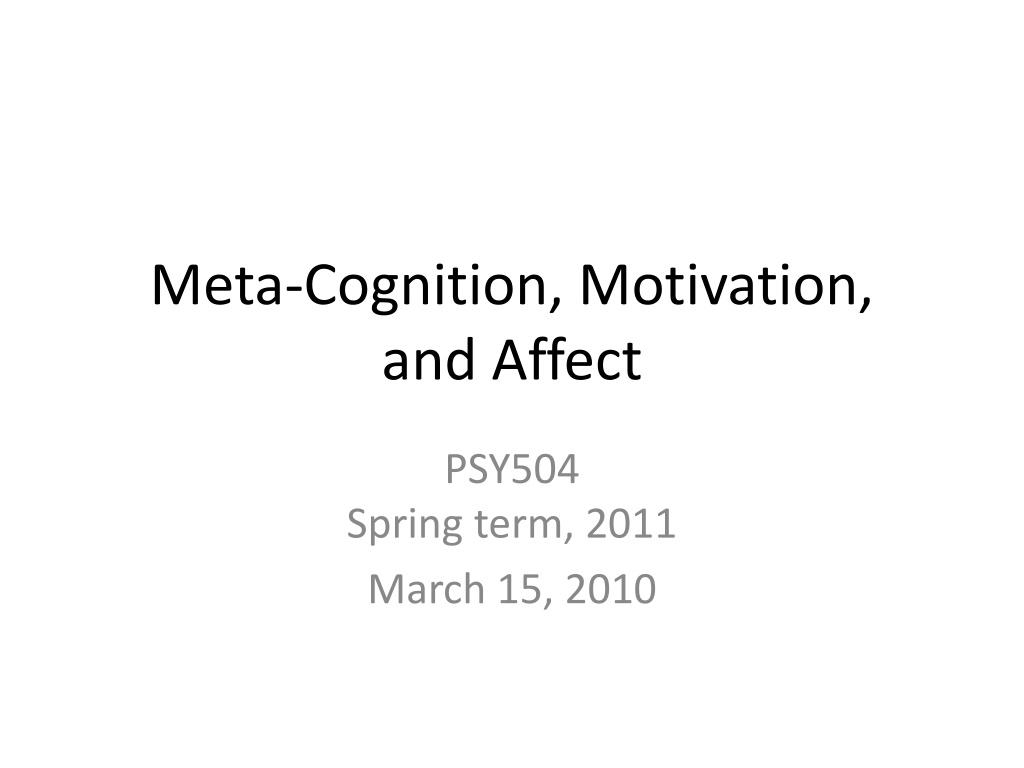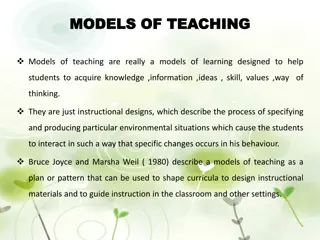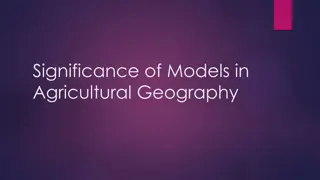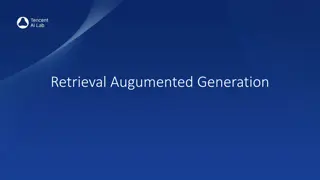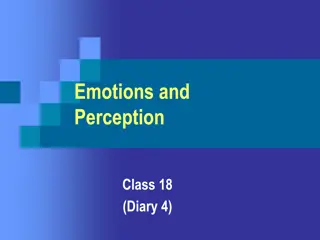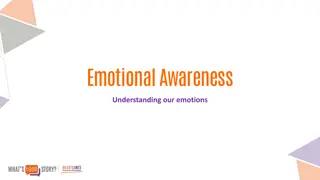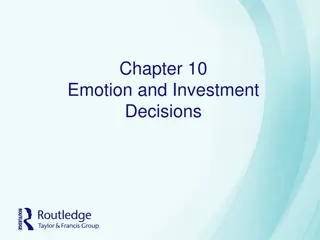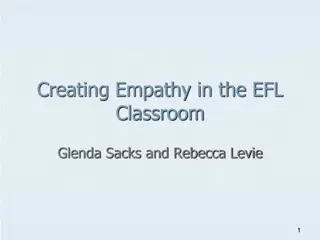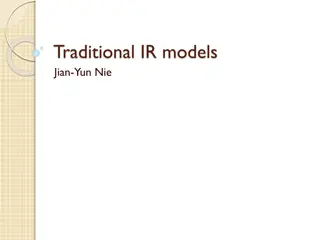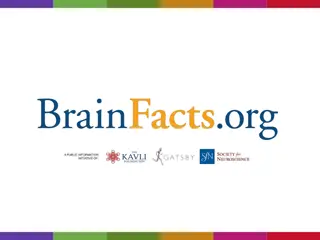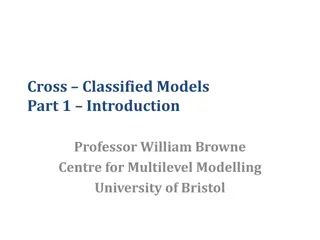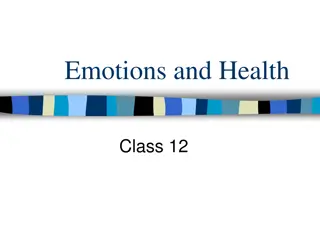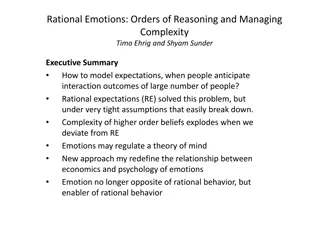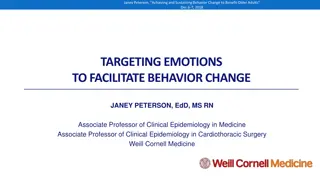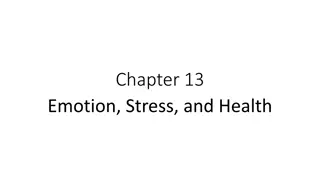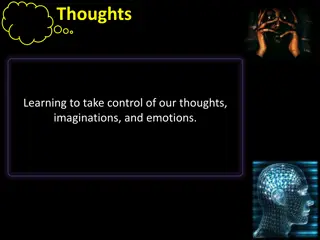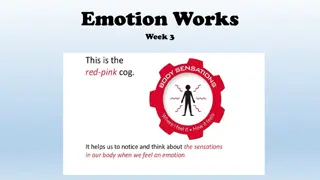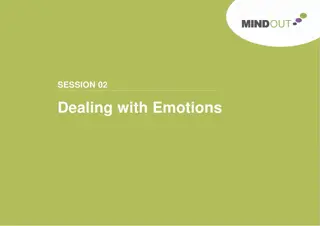Key Models of Affect and Basic Emotions
Today's review focuses on key models of affect and basic emotions, highlighting differences and evidence. Explore Ekman's basic emotions and emotion families.
Download Presentation

Please find below an Image/Link to download the presentation.
The content on the website is provided AS IS for your information and personal use only. It may not be sold, licensed, or shared on other websites without obtaining consent from the author.If you encounter any issues during the download, it is possible that the publisher has removed the file from their server.
You are allowed to download the files provided on this website for personal or commercial use, subject to the condition that they are used lawfully. All files are the property of their respective owners.
The content on the website is provided AS IS for your information and personal use only. It may not be sold, licensed, or shared on other websites without obtaining consent from the author.
E N D
Presentation Transcript
Meta-Cognition, Motivation, and Affect PSY504 Spring term, 2011 March 15, 2010
Today We are going to review the key models of affect We will not go into full detail on the evidence and coding for basic emotions We will talk about that in detail tomorrow But we will go into some of the key differences between the different models and the kinds of evidence they use
Today I am going to try to run through the basic models quickly Leaving more time for discussion and specifically comparison at the end
In the Beginning There was Ekman
Does anyone really look like this in real life?
Ekmans Basic Emotions Anger Fear Sadness Disgust Enjoyment Surprise Contempt Shame Guilt Embarassment Interest Awe Excitement
Emotion Families Each of these emotions is the core of an emotion family A theme: characteristics unique to that family Variations: Individual differences, cultural differences, situational differences
Note Not all forms of evidence available for all of the basic emotions Surprise does not have the same facial expressions in all cultures Only evidence of distinctive neurological patterns for anger, fear, disgust, sadness
Questions? Comments? Only brief ones here please Note that we will have a full session on Ekman s basic emotions next class And we will have opportunities to discuss Ekman in relation to other models in just a few minutes
Clore & Ortony model Also referred to as OCC model (Ortony, Clore, & Collins, 1988) According to this theory, emotions derive from cognitive appraisal of the current situation, which consists of events, agents, and objects. The outcome of the appraisal depends on how the situation fits with one s goals and preferences. Conati & Maclaren, 2002
Key Difference From Ekman Emotional appraisal is not automatic but involves complex cognitive processing and categorization Which seems automatic because it is so ingrained Some physiological components of emotion precede cognition, but cognition is necessary for determining which affective state emerges
Key Difference From Ekman Emotions are not unitary but hierarchical
Key Difference From Ekman Opposite emotions (positive, negative) come from the same processes Love, Hate Pride, Shame
Key Difference From Ekman Many positive emotions Ekman lumps all positive emotions together in Enjoyment Though acknowledging the possible existence of awe, excitement
Key Difference From Ekman: Theory Generation Ekman theory generation very bottom-up Comes from extensive study of video, and studies showing pictures of actors to peoples around the world OCC theory generation much more top-down Based on knowledge of cognitive theories, laboratory studies, and extensive reading of first- person accounts of emotion
Note Only two emotions common between OCC model and Ekman Anger, Fear Sadness becomes {Distress, Remorse, Disappointment, Pity}? Disgust becomes {Reproach, Pity}? Surprise goes away?
Sadness Should there be sadness as a separate construct in OCC? Or is sadness the physiological/facial component of OCC states like {Distress, Remorse, Disappointment}? What does pity map to? Sadness or disgust?
Russell (2003) Even if facial and physiological expressions of emotion such as fear are culturally universal Is that meaningful?
Russell (2001) Conceptualization of what emotions mean differ across cultures In Luganda, anger and sadness are denoted by the same word and it is difficult for researchers to explain the difference Experiences that cause anger in USA lead to crying among Buganda people (Leff, 1973) Brazilians cry when they are angry (personal communication, Ryan Baker)
Russell (2001) Conceptualization of what emotions mean differ across cultures Shame and Fear not distinguished by Gidjingalia people (Hiatt, 1978) Shame, Guilt, and Embarrassment not distinguished by Japanese and Javanese (Lebra, 1983; Keeler, 1983) Can anyone here confirm this? Shame almost impossible to translate into many languages
Russell (2001) Conceptualization of what emotions mean differ across cultures Shame and Fear not distinguished by Gidjingalia people (Hiatt, 1978) Shame, Guilt, and Embarrassment not distinguished by Japanese and Javanese (Lebra, 1983; Keeler, 1983) Can anyone here confirm this? Shame almost impossible to translate into many languages Also unknown among American politicians
Russell (2001) Conceptualization of what emotions mean differ across cultures Hatred and Disgust not separated by Samoans (Gerber, 1975)
Russell (2001) Emotions considered basic in other cultures have no translation in English and/or are hard to explain to Americans Schadenfreude (German)
Russell (2001) Emotions considered basic in other cultures have no translation in English and/or are hard to explain to Americans Schadenfreude (German) Litost (Czech) Milan Kundera wrote a chapter in a novel about Litost, and then five years later, decided he hadn t explained it right, and wrote another chapter in another novel
Russell (2001) Emotions considered basic in other cultures have no translation in English and/or are hard to explain to Americans Schadenfreude (German) Litost (Czech) Saudades (Portuguese)
Russell (2001) Emotions considered basic in other cultures have no translation in English and/or are hard to explain to Americans Schadenfreude (German) Litost (Czech) Saudades (Portuguese) Duende (Spanish)
Leading to the question Is there something more basic than Ekman s set of emotions? Termed core affect neurophysiological state consciously accessible as the simplest raw (nonreflective) feelings evident in moods and emotions. (Russell, 2003)
Core Affect Dimensions Activation/Deactivation Also called Arousal Pleasure/Displeasure Also called Valence These dimensions did not start with Russell Some early uses of these constructs: Arousal: Hebb (1955) Valence: Vroom (1968)
Note that Pretty much any emotion can be mapped onto this framework But is it sufficient to distinguish between different emotions? How can disgust and upset be distinguished? Isn t there something psychologically interesting in the difference between disgust and upset?
DMello and Graessers perspective D Mello, Taylor, & Graesser, 2007 Graesser et al., 2007 Baker, D Mello, Rodrigo, & Graesser, 2010
DMello and Graessers perspective The affect that is relevant to study differs based on the context of research, and the research questions Affect that is relevant during learning is different than the affect that is relevant in other situations
Especially relevant during learning (D Mello et al., 2007; Baker et al., 2010) Boredom (Csikszentmihalyi, 1990; Miserandino, 1996) Confusion (Craig et al., 2004; Graesser et al., 2008; Kort et al., 2001) Delight (Fredrickson and Branigan, 2005; Silvia and Abele, 2002) Engaged concentration (cf. Csikszentmihalyi, 1990) The affect associated with Flow Frustration (Kort et al., 2001; Patrick et al., 1993) Surprise (Schutzwohl and Borgstedt, 2005) These will be discussed in detail in future classes
Note None of these show up in other models we ve discussed except for surprise And surprise will probably be taken out of D Mello s models soon, as it has repeatedly been rare in studies of affect during learning (D Mello et al., 2007, 2008, 2010; Rodrigo et al., 2007a, 2007b, 2008, 2009; Baker et al., 2010)
Not relevant during learning Basic emotions They occur but they are rare
DMello, Lehman, & Person (2010) Asked students to describe their affect during a learning task with reference to Five of the six learning-specific affective states from D Mello et al. (2007) Not including engaged concentration/flow, delight I m not sure why Ekman s basic emotions Four other affective states: anxiety, contempt, curiosity, eureka
Proportions (Ekman basic emotions in Red) Curiosity 13.8% Boredom 10.6% Frustration 10.5% Confusion 9.2% Happiness 5.5% Anxiety 4.2% Disgust 3.0% Contempt 2.7% Surprise 2.7% Eureka 2.5% Anger 2.2% Sadness 1.2% Fear 0.8%
Note Many of these affective states not recognizable just from facial expression Other sensors, such as interaction logs, skin conductance, and butt sensor required (D Mello & Graesser, 2010) Suggests that Ekman s focus on facial expressions may not be sufficient More on this in affect detection class
